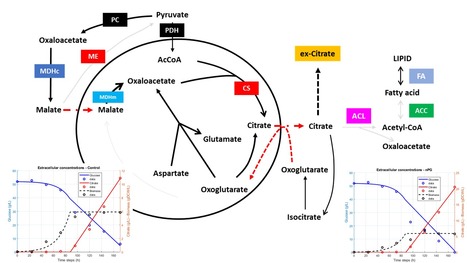Citric acid (citrate) is a tricarboxylic acid (three acid functions) produced by microorganisms, plants and animals. It plays a central role in the metabolism of virtually all living organisms, but is also used as a food additive for its diverse functional properties (acidity regulator, acidulant and antioxidant). In a context where consumer associations are exerting increasing pressure to dispense with food additives, the natural enrichment of food products with citrate by microbial production could be an interesting alternative to the use of additives.
In a study published in Scientific Reports, researchers from the Laboratoire d'Informatique (LRI, CNRS/UPSaclay, Orsay), the MaIAGE unite (INRAE/UPSaclay, Jouy-en-Josas), Polytechnique Montréal and the APHP have identified a mitochondrial protein called alternative oxidase (AOX) capable of inducing respiratory-fermentative transitions in the yeast Yarrowia lipolytica, in particular the French strain Y. lipolytica W29 which belongs to INRAE. Modulation, first by modelling and then in the laboratory, of the cellular respiration of this yeast made it possible to double citrate production.
These promising results show the interest of algorithms applied in computational biology to meet biotechnological and industrial challenges.
Contact : sabine.peres@lri.fr

